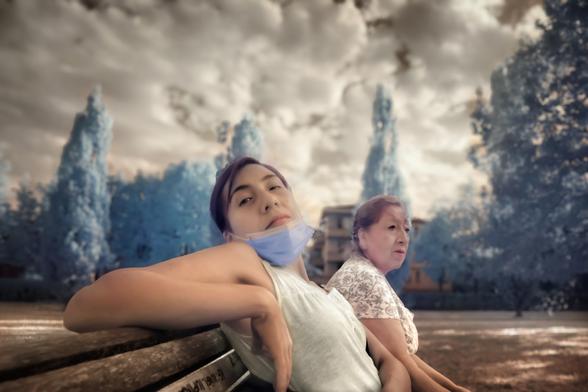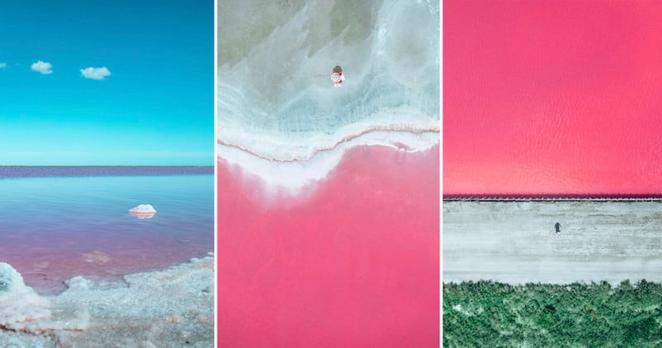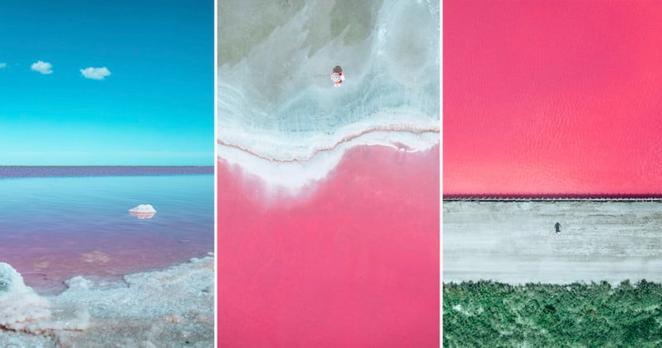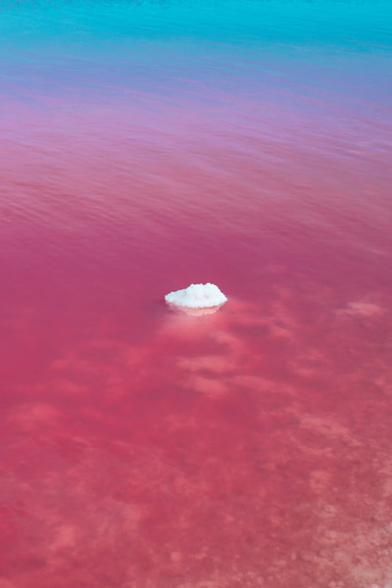Pretty in pink 🩷
#photography #infrared #infraredphotography #landscape #landscapephotography #cheshire #pink #lumix #infraredcamera
#infraredcamera
Apple Considering Putting Cameras in AirPods: Report https://petapixel.com/2024/07/03/apple-considering-putting-cameras-in-airpods-report/ #infraredcamera #Technology #headphones #ircamera #patent #apple #News
NASA’s New Infrared Camera Sets High-Res Sights on Earth and Beyond https://petapixel.com/2024/05/29/nasas-new-infrared-camera-sets-high-res-sights-on-earth-and-beyond/ #infraredcamera #imagesensor #Technology #Equipment #science #sensor #Space #News #NASA
Agosto 2021
Una delle tante mie prime foto in IR finora mai sviluppate.
Canon M10 fullspectrum
#Togetherness #Togetherness #Outdoors #People #Portrait #Happiness #Sky #LeisureActivity #Cloud #Bonding #women #infrared #Infraredcamera #590nm #590nminfraredphotography #infraredphototgraphy
Una delle tante mie prime foto in IR finora mai sviluppate.
Canon M10 fullspectrum
#Togetherness #Togetherness #Outdoors #People #Portrait #Happiness #Sky #LeisureActivity #Cloud #Bonding
#women #infrared #Infraredcamera #590nm #590nminfraredphotography #infraredphototgraphy
@TechConnectify What #InfraredCamera are you using anyway? I've wanted to get one for a little while but they all seem painfully expensive.
J'ai une caméra thermique Flir (bas de gamme) dans mon sac à dos, si vous avez des idées de trucs à photographier/filmer en infrarouge, je prends ! #infrared #infraredcamera #infrarouge #camerathermique #thermalcamera #thermalimaging
NASA’s James Webb Telescope to be the ‘Coolest Camera in Space’
NASA's soon-to-be-launched James Webb Telescope is set to fly into space this month and begin its tasks of collecting infrared light from the distant corners of the cosmos. But to do so, it needs to get very, very cold.
The James Webb Telescope is the successor to the Hubble Space Telescope and is the largest space observatory ever made. NASA says it will be the "coolest camera in space," and while the vernacular use of the term might be correct, it also had to be tested to be literally the coldest: the telescope had to be cooled down to almost the coldest temperature matter can reach before one of its tools, the mid-infrared instrument (MIRI), can properly operate.
NASA explains that many of the cosmic objects out there -- such as stars and planets as well as gas and dust from which they are formed -- emit infrared light, also called heat radiation. Unfortunately, most other warm objects also emit it, meaning Web's four infrared instruments can detect their own infrared glow.
In order to reduce these emissions, the instruments have to be really cold: about 40-degrees Kelvin or minus 388 degrees Fahrenheit (minus 233 degrees Celcius).
This portion of the MIRI instrument, seen here at the Rutherford Appleton Laboratory in the U.K., contains the infrared detectors. The cryocooler is positioned far from the detectors because it operates at a higher temperature. A tube carrying cold helium connects the two sections. | Credits: Science and Technology Facilities Council (STFC)
"To operate properly, the detectors inside the mid-infrared instrument, or MIRI, will have to get even colder: less than 7 kelvins (minus 448 degrees Fahrenheit, or minus 266 degrees Celsius)," NASA explains.
That is just a few degrees above absolute zero, which is the coldest temperature that is theoretically possible to reach, though has never actually ever been attained since it represents the complete absence of heat.
"Temperature is essentially a measurement of how fast atoms are moving, and in addition to detecting their own infrared light, the Webb detectors can be triggered by their own thermal vibrations. MIRI detects light in a lower-energy range than the other three instruments. As a result, its detectors are even more sensitive to thermal vibrations. These unwanted signals are what astronomers refer to as 'noise,' and they can overwhelm the faint signals that Webb is trying to detect," NASA continues.
MIRI (left) sits on a balance beam at Northrop Grumman in Redondo Beach as engineers prepare to attach it to the Integrated Science Instrument Module (ISIM) using an overhead crane. ISIM is the heart of Webb and holds the telescope’s four science instruments. | Credits: NASA/Chris Gunn; Text Credit: NASA/Laura Betz
Once in space, the Webb Telescope will unfold a huge sun shield that is about the size of a tennis court that will block MIRI and other instruments from the sun's heat, which will allow them to passively cool. About 77 days after launch, MIRI's cryocooler will spend an additional 19 days lowering the temperature of the instrument to less than seven degrees Kelvin. Then, it will be ready to start making observations.
The cryocooler itself is an incredible technological achievement, and uses helium gass to carry heat away from the instrument's detectors. NASA has a detailed webpage that explains how it works for those interested in delving deeper into the technologies that support the new space camera.
“There were a couple of challenges working on a system that spans multiple regions of the observatory,” Analyn Schneider, MIRI’s project manager at JPL, says.
JPL flight technicians Johnny Melendez (right) and Joe Mora inspect the MIRI cryocooler before it was shipped to Northrop Grumman in Redondo Beach, California. There, the cooler was attached to the body of the Webb telescope. | Credits: NASA/JPL-Caltech
“Those different regions are led by different organizations or centers, including Northrop Grumman and NASA’s Goddard Space Flight Center, and we had to interface with everybody. There’s no other hardware on the telescope that requires that, so that was a challenge unique to MIRI. It’s definitely been a long road for the MIRI cryocooler, and we’re ready to see it perform in space.”
The James Webb Telescope launch has been delayed several times, but is currently scheduled to take place on December 24.
Header image: Engineers conduct a “receiving inspection” of the James Webb Space Telescope’s Mid-Infrared Instrument at NASA’s Goddard Space Flight Center after its journey from the United Kingdom. | Credits: NASA/Chris Gunn
#news #spotlight #technology #astrophotography #cooling #infrared #infraredcamera #infraredimaging #jameswebbspacetelescope #nasa #space
Photo Series of Natural Pink Salt Fields Looks Like Infrared Images
A photographer who is known for his infrared images has created a surreal body of work that shows the uniquely pink salt fields of France in a way that looks infrared, but instead only uses the natural colors of the area.
Paolo Pettigiani, based in Turin, Italy, is an exhibited and published photographer and co-founder and art director of No Panic, a creative agency.
His work primarily uses infrared (IR) photography, and one of his pieces may be very familiar to Adobe users: Pettigiani's image was chosen as the loading screen for Adobe Lightroom Classic 2021.
One of Pettigiani's recent series doesn't use his trademark infrared photography because the location that he scouted already creates the illusion of IR with bright hues of pinks and blues -- a seemingly unnatural mix of colors to find in nature, but possible nevertheless.
As a creative from a young age and a Design and Visual Communication graduate at Politecnico in Turin, Pettigiani started to research how to visually combine photography and graphic design into unique imagery where colors play a particular focus and arrived at IR photography.
View this post on Instagram
A post shared by Paolo Pettigiani | infrared (@paolopettigiani)
It helps Pettigiani express the essence of his creative vision -- "a fusion of science and creativity, playing with colors, shapes, and contrasts in order to create a visual mood to get the viewer lost into a new and unseen world that question reality as we see it."
Although his recent work titled, "Dunaliella salina" -- which is also the name for a type of micro-algae found in sea salt fields and is responsible for the bright pink hue seen in the water -- doesn't feature IR, all of the other elements are still there.
Pettigiani came across the unique salt fields in southern France which fired his creativity. The landscape gave him "the geometry and the minimalism of the lines created by water and sand, paired with the natural elements of seaweed," he says.
He is always on the lookout for geometry, minimal spaces, and colors -- the three key elements that form his composition considerations, which are also present in this project.
The goal of this project was to invite emotions in the audience the say way his IR artworks do and to highlight the beauty of nature, which can be found in everyday actions and places.
To capture his striking collection, Pettigiani used Canon EOS 5D Mark III and DJI Mavic 2 Pro Drone. Both are converted to the full spectrum for IR photography when shooting other types of work, such as a similar project he shot in Salar de Uyuni in Bolivia, although with IR.
As for any future projects, Pettigiani tells PetaPixel that he has just come back from another road trip along Normandy and Brittany, France, and although didn't find any salt fields, he did create some interesting images he intends to publish soon.
More of Pettigiani's work can be found on his website and Instagram.
Image credits: All images by Paolo Pettigiani and used with permission.
#inspiration #travel #digitalinfrared #france #infrared #infraredcamera #infraredphotography #ir #landscape #paolopettigiani #saltfields
Scientists Create Search and Rescue Cyborg Cockroach Camera
A group of international robotics researchers has developed an urban search and rescue solution that skirts past the current limitations of miniature robotics through what they are calling an insect computer hybrid system, which fuses a living insect platform with a microcontroller.
The researchers say that there is still a long way to go before miniature robotics are ready for true search and rescue missions, due mainly to the limitations of modern batteries, the "computation load of locomotion," and obstacle avoidance systems. As an alternative solution, they have developed a computer and biological hybrid in the form of a microcontroller and camera attached to the back of a Madagascar hissing cockroach.
The combination cyborg cockroach is capable of autonomous navigation with the ability to find and detect humans in damaged environments such as a collapsed buildings. It uses a mix of a custom control algorithm and the insect's natural navigation capability to be able to explore complex terrains, and its onboard "human presence detection" uses an infrared camera that is guided by a custom machine learning model.
Because of its hybrid design, the cyborg cockroach has a much longer "battery" life than conventional robotics of similarly small size and can operate for an hour (or more) which makes it actually viable for real-world missions.
In their 43-page paper, the researchers explain that the cockroach is mainly controlled via electrical stimulus at neural, neuromuscular, or sensory locations. Because the insect provides most of the "power" through its biology, the amount of electrical power that needs to be built into the computing array is minimal.
"The insect–computer hybrid system consists of an insect platform manipulated by a customized wireless backpack control system," the researchers explain. "The insect’s movement was directed by electrically stimulating its left and right cerci to induce turning; when the left cercus was stimulated, the insect made a right turn (clockwise rotation), and vice versa."
The video below was uploaded by a research team in 2015 and shows how they were able to control the direction of a beetle through electrical impulses, the same method by which the cockroach is controlled.
Below is a video from the research project that shows how the system works specifically with a cockroach.
<https://petapixel.com/assets/uploads/2021/06/Video_2.mp4>
The team tested the cyborg cockroach's ability to navigate the terrain and find humans by placing it in a mock situation with the inclusion of several human and non-human targets. The researchers say that despite the lack of any obstacle information beforehand, the cyborg was able to successfully guide itself through the terrain and using the infrared camera and human-detection algorithm was able to correctly classify humans while ignoring non-human subjects (as shown below).
<https://petapixel.com/assets/uploads/2021/06/Video_1.mp4>
The onboard infrared camera is a small 32×32 pixel sensor with a 90-degree field of view and the researchers state that its system has an 87 percent success rate at distinguishing humans from other subjects, which improves to 90 percent when the cockroach is within one and a half meters from the subject. While the cockroach cannot be tracked in real-time due to hardware constraints, the researchers hope to implement this in the future with low-energy signals that can be relayed to the control center.
The full research paper can be found here.
Image credits: All photos, illustrations, and videos via arXiv:2105.10869.
#news #technology #cockroach #infrared #infraredcamera #insect #insects #research #researchers #searchandrescue





